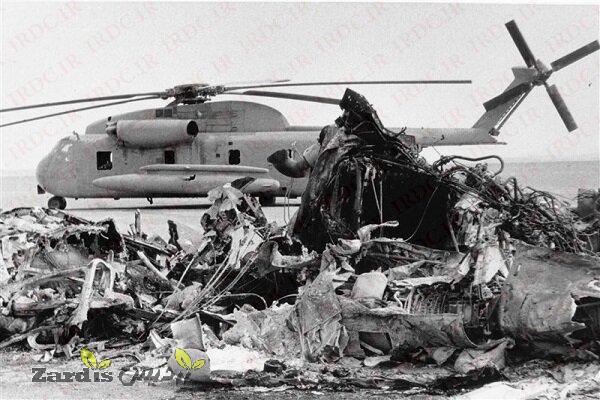On this day in history, the US military carried out a covert operation in Iran by the order of then president Jimmy Carter.
The operation, known as Eagle Claw, failed due to major sand storms in the Tabas desert, in today’s South Khorasan Province.
The botched American mission was an attempt to release 52 Staff of the US Embassy [known as the den of espionage] who had been held in Tehran following the Embassy takeover by revolutionary students in Iran after the 1979 Islamic Revolution.
Earlier in April in 1980, just few weeks before the launch of the operation, Washington had severed diplomatic ties with Iran over the US Embassy takeover by the students in Tehran which was approved of by the Leader of the Islamic Revolution Imam Khomeini.
The Iranian students were angry about the US president’s move in allowing deposed Mohammad Reza Shah to enter United States soil and demanded his return to Iran to go on trial for his crimes against the Iranian nation.
During this time, American military commanders refined a plan for a possible rescue mission, and conducted training exercises to evaluate the troops and equipment that would be used in such an undertaking. President Carter approved a military rescue operation on April 16, 1980. The plan utilized elements of all four branches of the U.S. armed services; the two-day operation called for helicopters and C-130 aircraft to rendezvous on a salt flat (code-named Desert One) some 200 miles southeast of Tehran. There the helicopters would refuel from the C-130s and pick up combat troops. The helicopters would then transport troops to the mountain location from which the actual mission would be launched the following night. Starting on April 19th, forces were deployed throughout Oman and the Arabian Sea.
On April 24th, 1980, Operation Eagle Claw began when eight United States Navy RH-53D Sea Stallion helicopters took off from the deck of the American aircraft carrier, the USS Nimitz, in the Arabian Sea for a 600-mile trip to rendezvous in the Iranian desert with six C-130 transport aircrafts. The aircraft encountered a haboob, a violent wind-driven sand storm common in desert. This caused extreme visibility issues, damage to the aircrafts, and sickness with the crews. President Carter and his staff received the news and decided to abort the mission.
As many as 8 US commandos were killed in the incident, as their death were confirmed by the Americans.
As the force prepared to depart, a RH-53D helicopter crashed into a C-130 carrying extra fuel for refueling igniting a fire that killed 5 Airmen and 3 Marines.
Many believe the incident played a major role in Carter’s defeat in the 1980 presidential election in the US.
Imam Khomeini at the time described the sandstorm and sand particles as agents of God Almighty who came to punish the aggressor. The Leader of the Islamic Revolution further said that Carter’s order to violate Iran’s territorial integrity by the aggressive operation was aimed at securing his win the elections that year.
Since the failed US operation Eagle Claw 45 years ago, Iran has boosted and upgraded its defense capabilities and can withstand a multitude of threats.
MNA
- زردیس Zardis
- News code 56637
- 25 View
- بدون نظر
Zardis news | The latest news of Iran and the world
تمامی حقوق مطالب برای Zardis news محفوظ است و هرگونه کپی برداری بدون ذکر منبع ممنوع می باشد.
طبق ماده 12 فصل سوم قانون جرائم رایانه ای کپی برداری از قالب و محتوا پیگرد قانونی خواهد داشت.
طراحی و اجرا: سامانه سایت ساز زردیس







